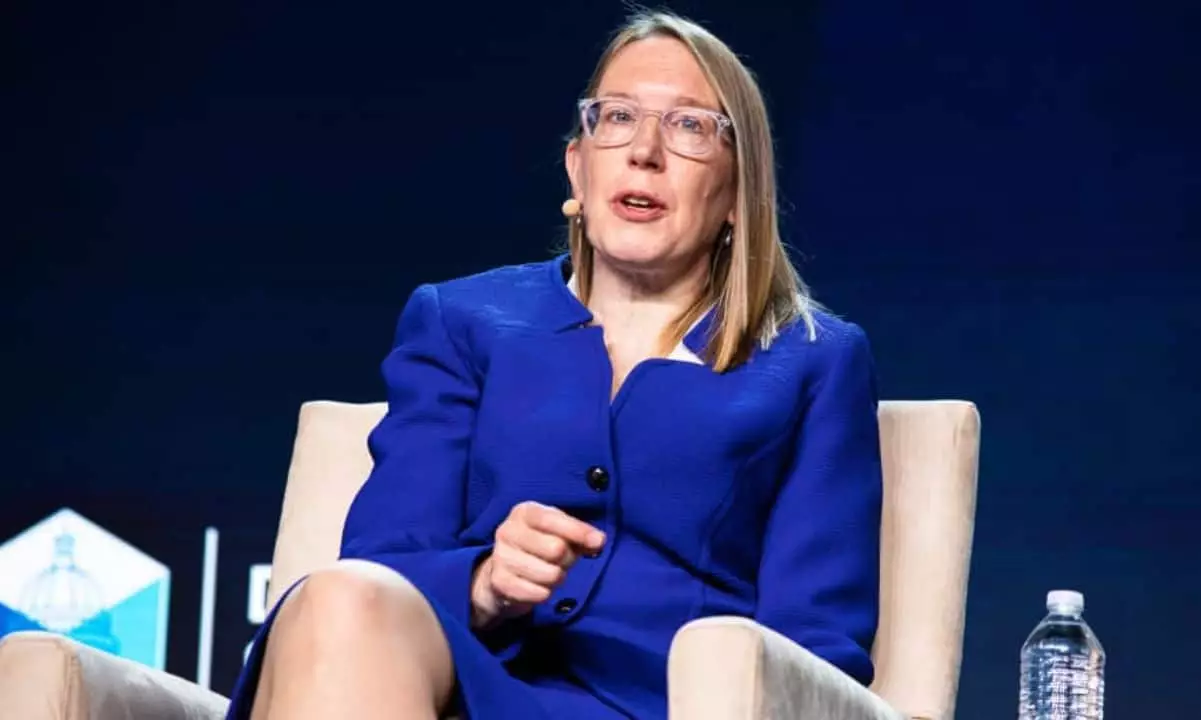The advent of cryptocurrencies has undoubtedly disrupted traditional financial systems, introducing both innovative opportunities and significant challenges. As the U.S. Securities and Exchange Commission (SEC) navigates the complexities of regulating this burgeoning sector, Commissioner Hester Peirce has emerged as a prominent voice advocating for clearer guidelines and cooperation between regulators and industry participants. In light of her recent commentary regarding the SEC’s approach under the incoming Trump administration, we take a closer look at her priorities and their implications for the future of cryptocurrency regulation in the United States.
The Impact of Operation Chokepoint 2.0
One of Peirce’s focal points in her strategy is the controversial initiative known as Operation Chokepoint 2.0. Critics contend that this initiative represents an unofficial campaign to restrict cryptocurrency businesses from accessing essential banking services. The term originated from a previous government effort that sought to limit the banking sector’s engagement with certain industries deemed high-risk, but Peirce argues that similar tactics should not be employed against the crypto industry. She advocates for a paradigm shift in this approach, urging regulators to ensure that cryptocurrency firms can access necessary services such as custody solutions. By dismantling barriers that inhibit growth and innovation, Peirce envisions a more inclusive financial landscape.
The allegations surrounding Operation Chokepoint 2.0 gained traction when cryptocurrency exchange Coinbase revealed certain documents suggesting that government authorities were implementing informal restrictions on crypto operators. These so-called cautionary “pause letters” from the Federal Deposit Insurance Corporation (FDIC) raise questions about a potentially politicized agenda, further underscoring Peirce’s concerns about the regulation of the crypto sector. Her insistence on promoting access to banking services for these companies resonates not only with crypto advocates but also aligns with broader calls for fair treatment of emerging financial technologies.
A significant challenge that needs addressing is the lack of clarity regarding which digital assets the SEC oversees. Peirce emphasizes the urgency of explicitly defining the boundaries of SEC jurisdiction, distinguishing securities from non-securities. This clarity is crucial for fostering a favorable environment where crypto projects can flourish without the looming threat of regulatory ambiguity. By enabling market participants to better understand their obligations and rights, Peirce foresees an enriched ecosystem where compliance becomes more straightforward.
Her assertion calls for a collaborative approach, suggesting that regulators should engage directly with crypto firms to explore how existing regulations apply to this dynamic market. The suggestion that changes may be needed reflects a recognition of the rapid evolution within the crypto space, which outpaces traditional regulatory frameworks. An open dialogue between SEC officials and industry stakeholders could lead to meaningful reforms that balance investor protection with innovation, thus transforming the regulatory landscape into a more supportive environment.
The ongoing discourse surrounding Operation Chokepoint 2.0 isn’t confined to U.S. borders; its implications resonate on a global scale. Figures such as Cardano founder Charles Hoskinson have voiced concerns regarding the worldwide ramifications of politicized regulatory measures against crypto businesses. Such actions could hinder international competition and innovation, as well as potentially push blockchain technology to more hospitable regulatory environments abroad.
Additionally, U.S. Representative French Hill’s commitment to investigate Operation Chokepoint 2.0 illustrates a growing political awareness regarding the influence of government on financial institutions’ decisions. His emphasis on accountability and the responsible enforcement of banking practices against arbitrary account closures speaks to a broader sentiment advocating for transparency and fairness within the financial system.
Hester Peirce’s advocacy for a balanced regulatory environment reflects a crucial intersection of innovation, accountability, and cooperation. Her vision, which seeks to dismantle barriers posed by initiatives like Operation Chokepoint 2.0, highlights the vital need for clarity in regulatory frameworks, as well as the importance of fostering open communication between regulators and industry experts. As the crypto sector continues its evolution, policymakers must prioritize this collaboration to ensure a framework that accommodates innovation while safeguarding the interests of investors and the broader financial ecosystem.


Leave a Reply